Themed collection Environmental Science: Processes & Impacts Cover Art

Environmental occurrence, fate, effects, and remediation of halogenated (semi)volatile organic compounds
Guest editors Elizabeth Edwards, Lucy Carpenter, Sarah Blossom and Paul Tratnyek introduce the Halogenated (semi)volatile organic compounds themed issue of Environmental Science: Processes & Impacts.

Environ. Sci.: Processes Impacts, 2020,22, 465-471
https://doi.org/10.1039/D0EM90008G
Passive air sampling for semi-volatile organic chemicals
A comprehensive and critical review of the state-of-knowledge on the sampling of trace organic contaminants from the atmosphere without the help of a pump.
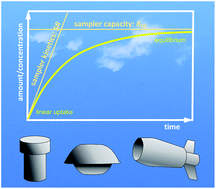
Environ. Sci.: Processes Impacts, 2020,22, 1925-2002
https://doi.org/10.1039/D0EM00194E
Emerging investigator series: critical review of photophysical models for the optical and photochemical properties of dissolved organic matter
Photophysical models for dissolved organic matter optical properties and photochemistry are critically reviewed.
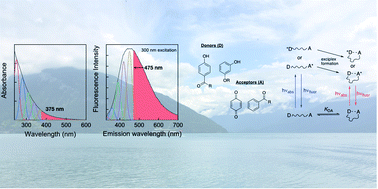
Environ. Sci.: Processes Impacts, 2020,22, 1139-1165
https://doi.org/10.1039/D0EM00056F
How the 2010 Deepwater Horizon spill reshaped our understanding of crude oil photochemical weathering at sea: a past, present, and future perspective
A critical review of the diverse and consequential roles that photochemical weathering plays in oil spill science, with emphasis placed on how our understanding of these roles has been reshaped since the 2010 Deepwater Horizon spill.
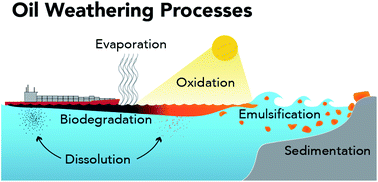
Environ. Sci.: Processes Impacts, 2020,22, 1125-1138
https://doi.org/10.1039/D0EM00027B
Positive matrix factorization on source apportionment for typical pollutants in different environmental media: a review
A bibliometric analysis of published papers with the key words “positive matrix factorization” and “source apportionment” in ‘Web of Science’, reveals that more than 1000 papers are associated with this research and that approximately 50% of these were produced in Asia.
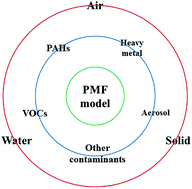
Environ. Sci.: Processes Impacts, 2020,22, 239-255
https://doi.org/10.1039/C9EM00529C
Biodegradation mechanism of polycaprolactone by a novel esterase MGS0156: a QM/MM approach
The detailed depolymerization of polycaprolactone involves two elementary steps; C–O bond cleavage, rather than triad-assisted nucleophilic attack was determined to be the rate-determining step.
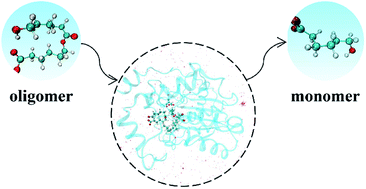
Environ. Sci.: Processes Impacts, 2020,22, 2332-2344
https://doi.org/10.1039/D0EM00340A
Aging induced changes in ice nucleation activity of combustion aerosol as determined by near edge X-ray absorption fine structure (NEXAFS) spectroscopy
Soot particles aged in acidic aqueous solutions reveal significantly enhanced ice nucleating activity.
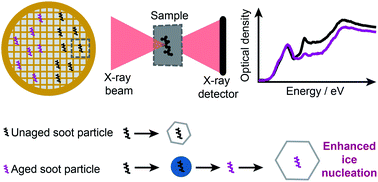
Environ. Sci.: Processes Impacts, 2020,22, 895-907
https://doi.org/10.1039/C9EM00525K
Investigating the presence and persistence of volatile methylsiloxanes in Arctic sediments
Uncertainties in the physicochemical properties of volatile methylsiloxanes have resulted in substantial uncertainties in calculations of concentrations persistence. Choosing the right set of properties seems crucial for making accurate predictions.
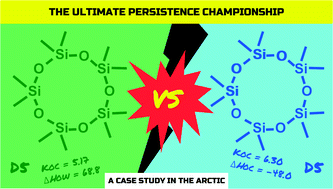
Environ. Sci.: Processes Impacts, 2020,22, 908-917
https://doi.org/10.1039/C9EM00455F
Predicting Cr(VI) adsorption on soils: the role of the competition of soil organic matter
Surface complexation models can predict Cr(VI) adsorption on soils after accounting for the competition from the soil organic matter.
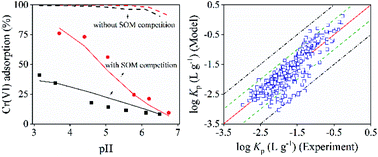
Environ. Sci.: Processes Impacts, 2020,22, 95-104
https://doi.org/10.1039/C9EM00477G
Effect of the irrigation water type and other environmental parameters on CeO2 nanopesticide–clay colloid interactions
In this work, the stability and aggregation behaviour of CeO2 nanoparticles (NPs) was investigated to predict their fate in the agricultural environment.
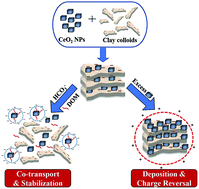
Environ. Sci.: Processes Impacts, 2020,22, 84-94
https://doi.org/10.1039/C9EM00428A
Evidence for a kinetically controlled burying mechanism for growth of high viscosity secondary organic aerosol
The incorporation of organic nitrates into viscous secondary organic aerosol during particle formation is enhanced relative to expected equilibrium partitioning, and is best described by a kinetically controlled “burying” mechanism.
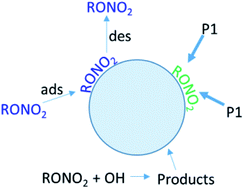
Environ. Sci.: Processes Impacts, 2020,22, 66-83
https://doi.org/10.1039/C9EM00379G
About this collection
Browse the cover art from recent issues of Environmental Science: Processes & Impacts, and read the science behind the images!
Click here to return to the journal homepage